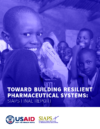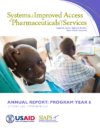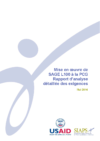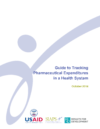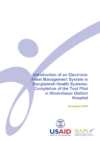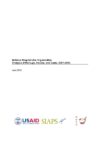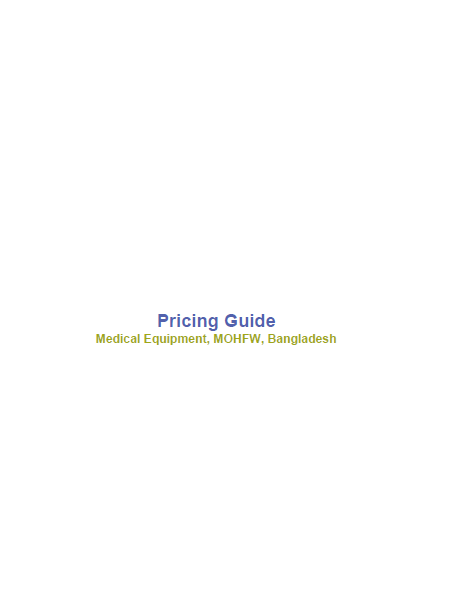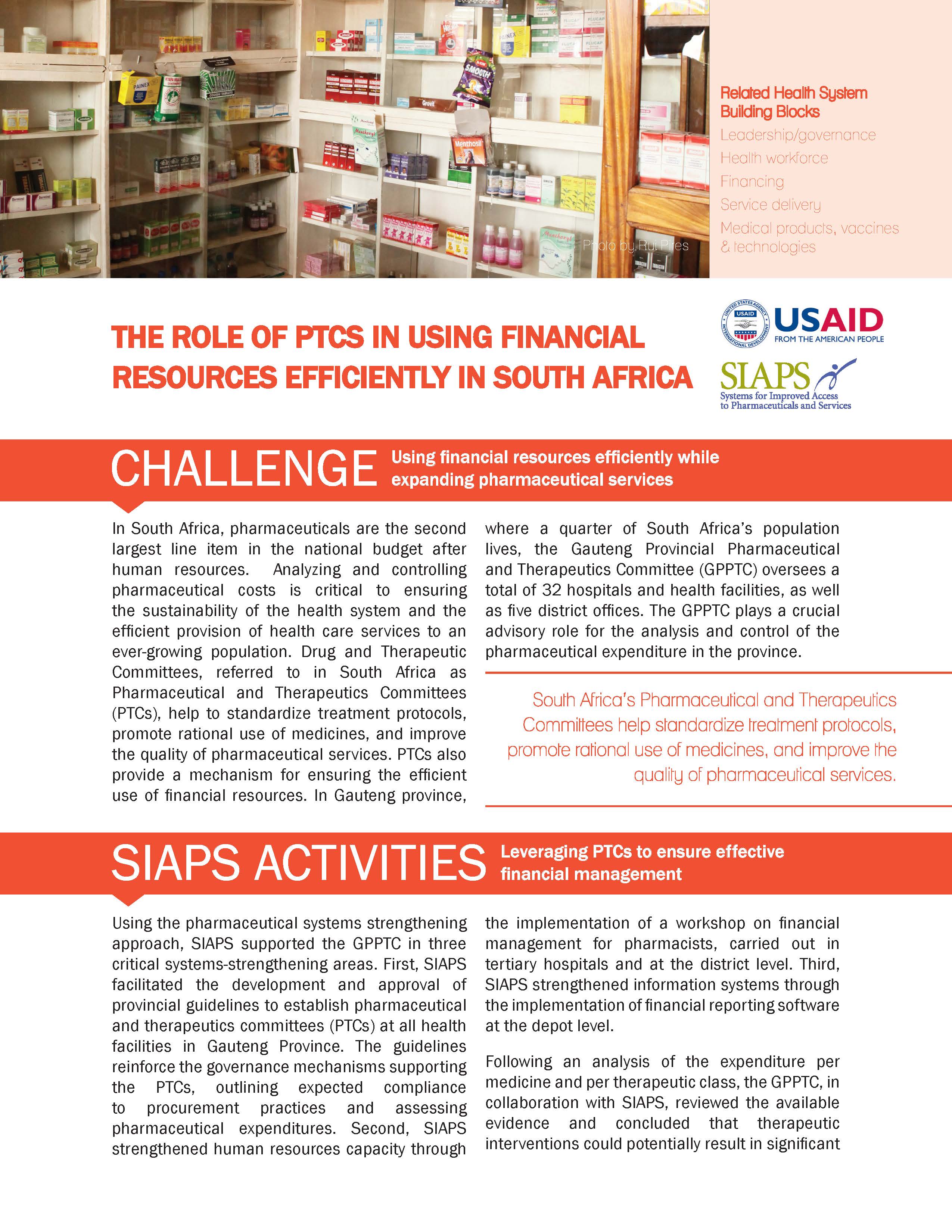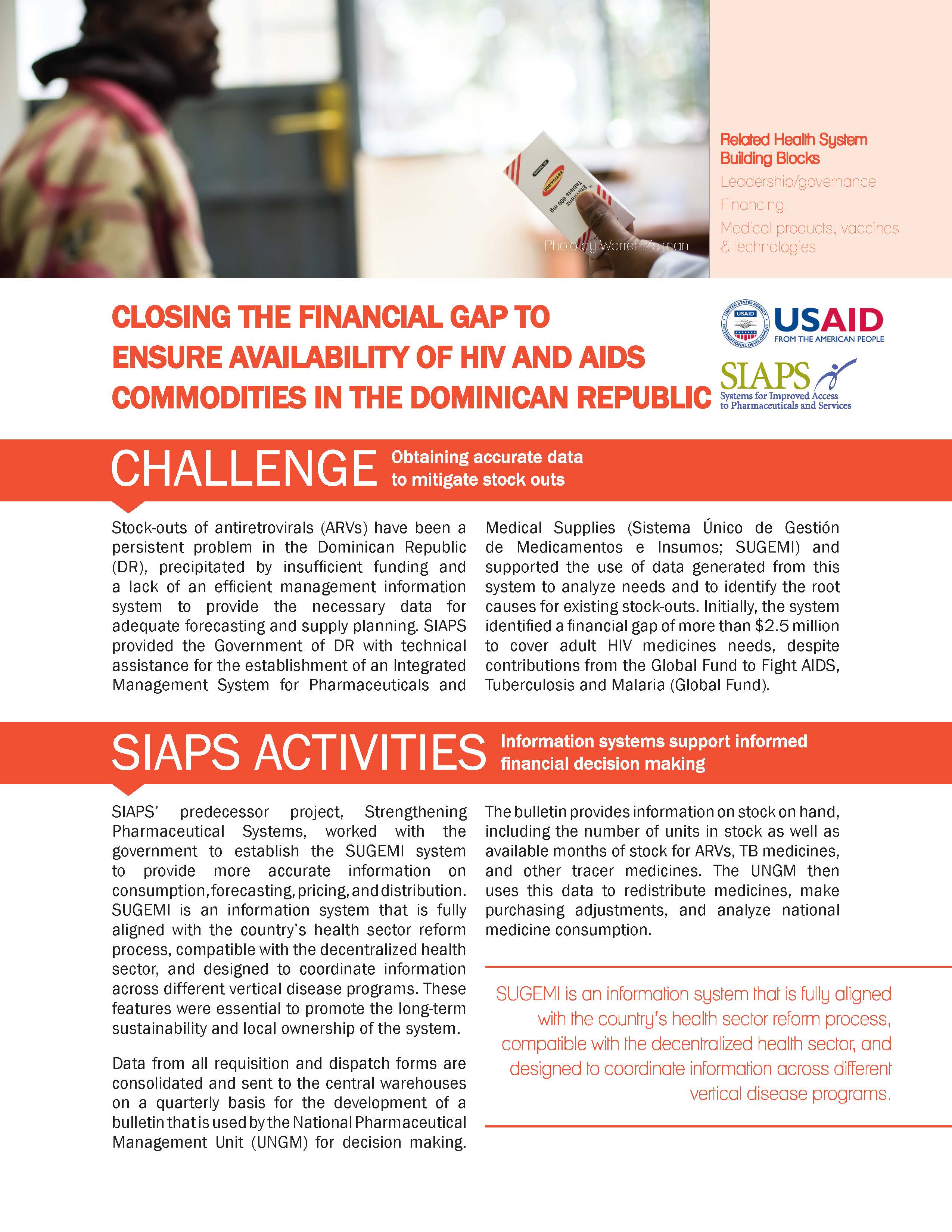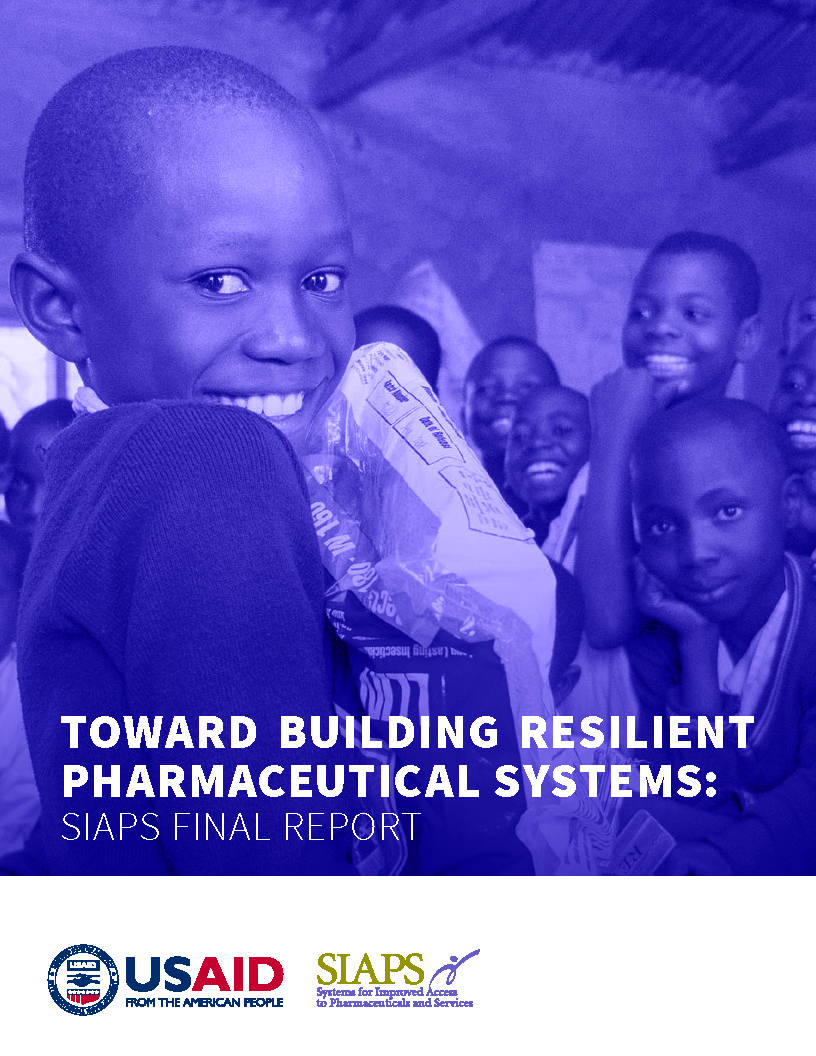SIAPS final report showcases achievements across 46 countries. Interventions are described by intermediate results and health areas and demonstrate how SIAPS successfully worked with a range of stakeholders, including Ministries of Health, to bolster pharmaceutical systems and address country-specific needs.
By Francis Aboagye-Nyame, SIAPS program director Greatjoy Mazibuko was a pharmacist at the Oshakati Intermediate Hospital in Namibia working with ART patients. Every day, he rose at dawn, not knowing how many patients he would have that day. He often worked for 12 hours or more; patients were kept waiting for hours, perhaps having traveled … Read more
To learn more about SIAPS program activities worldwide, please read our annual report for program year 6.
Ce document est le rapport d’analyse détaillée des exigences pour l’automatisation des opérations de la PCG avec SAGE L100 i7 et SAGE Paie. Il a été élaboré par la PCG et S2IT avec l’appui technique du projet SIAPS à travers un atelier et des visites de collecte d’information dans les services de la PCG. Il … Read more
This guide is designed to take country-level pharmaceutical and financing experts through the System of Health Accounts (SHA) framework as a potential approach that can be adapted to track pharmaceutical expenditures. The guide also reviews important first steps that must be considered to operationalize pharmaceutical expenditure tracking. It is intended to serve as a foundation … Read more
In Bangladesh, the government health facilities face a wide variety of health-related challenges and the Ministry of Health and Family Welfare (MOHFW) must have reliable and timely data on the performances of different parts of the health system to plan, implement, and measure health interventions. Even though the MOHFW procures a large number of medical … Read more
The SIAPS Program provided technical assistance to analyze recent NDSO operational costs and income trends and provide guidance on adjustments to existing markups to optimize the organization’s operational liquidity to sustain quality services and products. The study team analyzed or calculated selected financial and operational performance indicators from data in NDSO department reports, in annual financial … Read more
Medical equipment items are the most expensive material goods in a health care facility. As part of technical assistance from USAID-supported SIAPS (implemented by MSH) to ensure access to quality products, we have developed a standard table of organization and equipment (TOE) in collaboration with the Ministry of Health and Family Welfare (MOHFW). This TOE … Read more
Using the pharmaceutical systems strengthening approach, SIAPS supported the GPPTC in three critical systems-strengthening areas. First, SIAPS facilitated the development and approval of provincial guidelines to establish pharmaceutical and therapeutics committees (PTCs) at all health facilities in Gauteng Province. The guidelines reinforce the governance mechanisms supporting the PTCs, outlining expected compliance to procurement practices and assessing pharmaceutical expenditures. Second, SIAPS strengthened human resources capacity through the implementation … Read more
SIAPS’ predecessor project, Strengthening Pharmaceutical Systems, worked with the government to establish the SUGEMI system to provide more accurate information on consumption, forecasting, pricing, and distribution. SUGEMI is an information system that is fully aligned with the country’s health sector reform process, compatible with the decentralized health sector, and designed to coordinate information across different vertical disease programs. These features were essential to promote the … Read more
